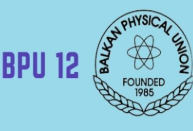https://doi.org/10.1140/epjs/s11734-021-00042-y
Regular Article
A novel study on hybrid model of radiative Cu– /water nanofluid over a cone with PHF/PWT
/water nanofluid over a cone with PHF/PWT
Hybrid model of radiative Cu– /water nanofluid
/water nanofluid
1
Department of Mathematics, Sardar Bahadur Khan Women’s University, Quetta, Pakistan
2
Department of Mathematics, College of Science Al-Zulfi, Majmaah University, Al-Majmaah, P.O. Box 66, 11952, Majmaah, Saudi Arabia
3
Department of Mathematical Sciences, Faculty of Science, Universiti Teknologi Malaysia, 81310, Johor Bahru, Johor, Malaysia
b
i.said@mu.edu.sa
c
sharidan@utm.my
Received:
22
July
2020
Accepted:
10
February
2021
Published online:
8
June
2021
The fascinating properties of hybrid nanofluid consisting of chemical and mechanical strength, excellent thermal and electrical conductivity, lower cost, high heat transfer rates, and physico-chemical reliability make it a desirable fluid in thermal energy system. Bearing in mind such exhilarating features of hybrid nanofluid, our intention in current research is to examine the heat and flow transfer rates in water-based hybrid nanofluid with suspension of hybrid nanoparticles (Cu– ) past a vertical cone enclosed in a porous medium. The effects of external magnetic field, thermal radiation, and non-uniform heat source/sink are additional features to the innovation of the constructed mathematical model. The set of nonlinear coupled equations supported by related initial and boundary conditions is executed numerically using finite difference method. In the analysis of coupled distribution, the impact of various controlling parameters on velocity and temperature are scrutinized and the obtained results are exhibited graphically. The physically important quantities such as heat transfer coefficient and wall shear stress are evaluated versus governing constraints. In addition, the heat transfer performance of (Cu–
) past a vertical cone enclosed in a porous medium. The effects of external magnetic field, thermal radiation, and non-uniform heat source/sink are additional features to the innovation of the constructed mathematical model. The set of nonlinear coupled equations supported by related initial and boundary conditions is executed numerically using finite difference method. In the analysis of coupled distribution, the impact of various controlling parameters on velocity and temperature are scrutinized and the obtained results are exhibited graphically. The physically important quantities such as heat transfer coefficient and wall shear stress are evaluated versus governing constraints. In addition, the heat transfer performance of (Cu– )–water hybrid nanofluid is compared with
)–water hybrid nanofluid is compared with  –water and Cu–water, and their results are summarized in the tables. For both types of nanofluids, solo and hybrid, it is witnessed that the temperature of the system increases in the presence of magnetic field and thermal radiation. Moreover, the velocity of the fluid increases due to high permeability effects. It is also observed that the Nusselt number increases by increasing nanoparticles concentrations in the fluid; however, it decreases in presence of internal heat source. A striking highlight of the executed model is the validation of the findings by comparing them with a content already reported in the literature. In this respect, a venerable coexistence is achieved.
–water and Cu–water, and their results are summarized in the tables. For both types of nanofluids, solo and hybrid, it is witnessed that the temperature of the system increases in the presence of magnetic field and thermal radiation. Moreover, the velocity of the fluid increases due to high permeability effects. It is also observed that the Nusselt number increases by increasing nanoparticles concentrations in the fluid; however, it decreases in presence of internal heat source. A striking highlight of the executed model is the validation of the findings by comparing them with a content already reported in the literature. In this respect, a venerable coexistence is achieved.
© The Author(s), under exclusive licence to EDP Sciences, Società Italiana di Fisica and Springer-Verlag GmbH Germany, part of Springer Nature 2021




